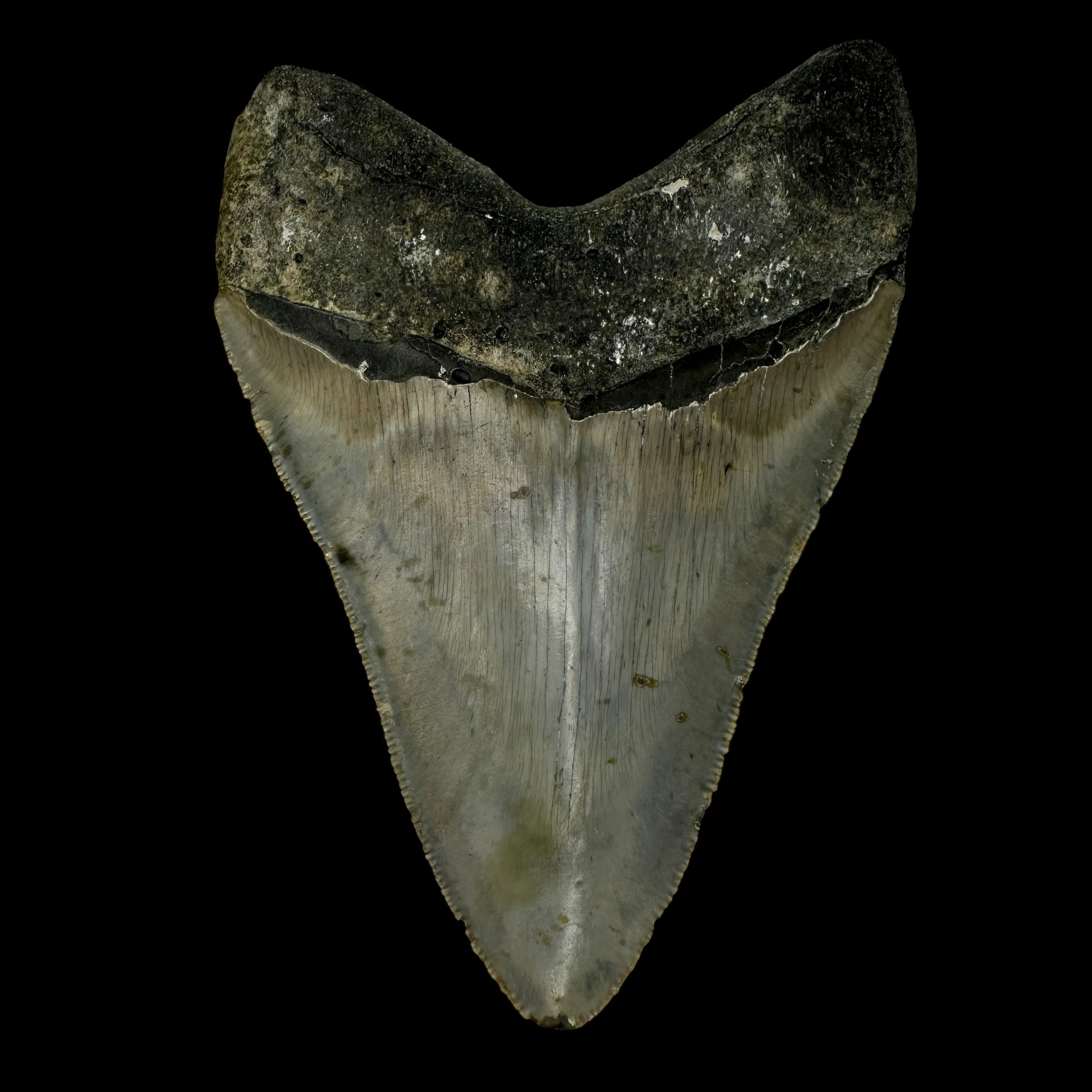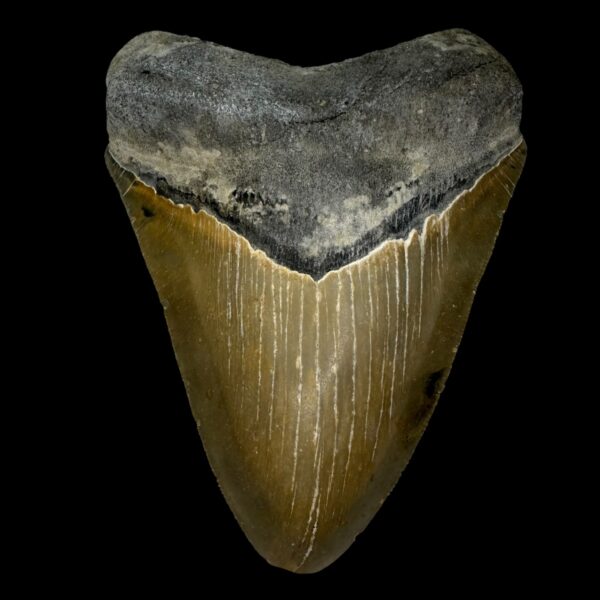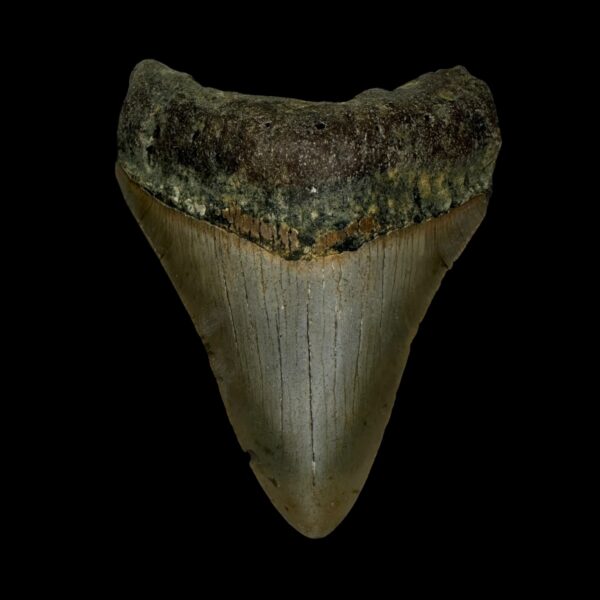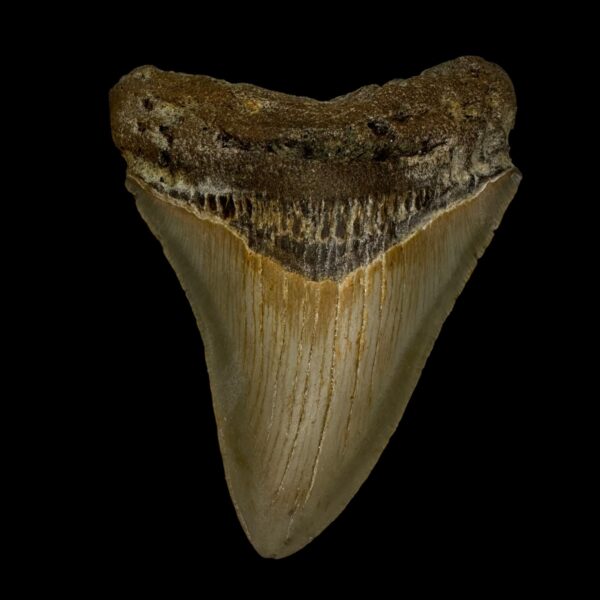Legendary Megalodon Teeth: Unearthing the Ocean’s Greatest Predator
Few creatures in Earth’s history inspire as much awe as the Legendary Megalodon Teeth from the colossal shark that once ruled the oceans. With teeth that could exceed 7 inches in length, this prehistoric predator left behind a legacy in the form of fossilized teeth—some of the most sought-after relics in the world. But what makes these fossils so extraordinary? Let’s dive deep into the mystery and majesty of Legendary Megalodon Teeth!
The Power Behind Legendary Megalodon Teeth
The Megalodon was a true apex predator, equipped with a bite force estimated at 40,000 pounds per square inch (psi)—one of the most powerful bites in history! Their massive, serrated teeth were designed to crush bone and rip through the thick flesh of whales, dolphins, and other marine giants.
🔹 Size Matters: Some Legendary Megalodon Teeth could reach up to 7 inches (17.8 cm) in length, making them the largest shark teeth ever discovered.
🔹 Structure & Strength: These teeth had serrated edges, allowing for efficient slicing through prey.
🔹 Sheer Numbers: Like modern sharks, Megalodons shed thousands of teeth over their lifetimes, leaving behind an abundant fossil record.
Why Are Legendary Megalodon Teeth So Valuable?
Collectors and fossil enthusiasts seek out Legendary Megalodon Teeth because of their rarity, size, and historical significance. These fossils are more than just relics; they are pieces of prehistoric history that provide insight into the ocean’s greatest predator. The biggest, most intact Legendary Megalodon Teeth can sell for thousands of dollars, making them highly prized among collectors.
Where Can You Find These Prehistoric Treasures?
Fossilized Legendary Megalodon Teeth have been uncovered across the globe, but some locations are particularly rich in these prehistoric treasures:
📍 North Carolina, USA – Offshore fossil beds reveal some of the largest specimens.
📍 South Carolina, USA – The Cooper River is a prime hunting ground for divers.
📍 Florida, USA – Peace River and Venice Beach are hotspots for fossil hunters.
📍 Morocco & Peru – These regions have produced beautifully preserved Legendary Megalodon Teeth.
📍 Australia – Coastal regions have yielded significant discoveries.
Want to own an authentic Legendary Megalodon Tooth? 🦷 Explore our collection here!
How Do Legendary Megalodon Teeth Become Fossils?
When a Megalodon lost a tooth, it would sink to the ocean floor and get buried in sediment. Over millions of years, minerals gradually replaced the organic material, turning the tooth into a fossil. The result? A perfectly preserved relic from a giant that ruled the seas over 3.6 million years ago.
Tips for Finding a Legendary Megalodon Tooth
If you dream of discovering your own Legendary Megalodon Teeth, here are expert tips to increase your chances:
🔹 Search after storms: Strong waves can reveal buried fossils along the shore.
🔹 Check riverbeds: Slow-moving rivers like South Carolina’s Cooper River often hide fossils in sediment.
🔹 Use a sieve: A small shovel and sieve can help filter out shark teeth from sand and gravel.
🔹 Go diving: Offshore fossil beds are goldmines for serious collectors.
🔹 Join a fossil tour: Experienced guides can lead you to the best spots.
The Mystery of the Megalodon’s Extinction
Despite its dominance, the Megalodon vanished from Earth around 3.6 million years ago. Scientists believe several factors contributed to its extinction:
🔥 Climate Change: Cooling ocean temperatures reduced food availability.
🐋 Competition: Early great white sharks and killer whales may have outcompeted them.
🌍 Ecosystem Shifts: The decline of large prey species led to food shortages.
Though this prehistoric giant is long gone, its fossilized remains serve as a tangible connection to the ancient ocean world.
Fun Facts About Legendary Megalodon Teeth
🦈 Some Legendary Megalodon Teeth still retain their sharp serrations, despite being millions of years old!
🦈 The largest Legendary Megalodon Tooth ever found measured 7.48 inches (19 cm) long.
🦈 Unlike modern sharks, Megalodons could have had 276 teeth at any given time, spread across five rows.
🦈 Fossilized Legendary Megalodon Teeth are often found in shades of black, brown, and gray due to mineralization.
Final Thoughts on Legendary Megalodon Teeth
Megalodon fossils are more than just remnants of the past—they offer a glimpse into the life of one of Earth’s most formidable predators. Whether you’re a collector, a diver, or simply fascinated by prehistoric creatures, owning one of these relics is like holding a piece of history.
🌊 Ready to add a Legendary Megalodon Tooth to your collection? Explore The Fossil Exchange for genuine, hand-recovered fossils straight from the ocean floor! 🦷
Megalodon vs. Modern Sharks: A Size Comparison
One of the most common questions about Megalodon is how it compares to modern sharks. The great white shark, often feared as today’s apex predator, pales in comparison to this prehistoric giant. While great whites grow up to 20 feet (6 meters) in length, Megalodon is estimated to have reached 50 to 60 feet (15 to 18 meters)—three times the size of the largest great whites!
Beyond sheer size, their teeth tell an even greater story. A fully grown great white has teeth that measure up to 3 inches (7.6 cm), whereas some Megalodon teeth exceed 7 inches (17.8 cm). These massive teeth, with thick enamel and serrated edges, were designed for crushing bone and tearing through flesh, allowing Megalodon to prey on whales and other large marine mammals.
The Value of Megalodon Fossils
Megalodon teeth are among the most prized fossils in the world. Their value depends on several factors:
🔹 Size – The larger the tooth, the rarer and more valuable it is.
🔹 Condition – Well-preserved teeth with intact serrations fetch higher prices.
🔹 Coloration – Minerals in the surrounding sediment influence a tooth’s color, with some rare hues being more desirable.
🔹 Location – Fossils from specific regions, such as deep-sea dive sites, tend to be more unique.
Collectors and enthusiasts seek these ancient relics not only for their aesthetic appeal but also for their scientific importance. A single Megalodon tooth can reveal details about its diet, habitat, and evolutionary history.
The Role of Megalodon in Prehistoric Ecosystems
As the ocean’s top predator, Megalodon played a crucial role in regulating marine life. It primarily hunted baleen whales, sea turtles, and large fish, preventing overpopulation and maintaining balance in the ecosystem.
Scientists believe that as global temperatures cooled and whale populations declined, Megalodon faced food shortages. This, along with competition from rising predators like orcas and great white sharks, may have contributed to its extinction. Without this massive predator, oceanic food chains underwent significant shifts, leading to the dominance of modern sharks and marine mammals.
How to Differentiate Real Megalodon Teeth from Fakes
With the popularity of Megalodon fossils, fake or altered specimens have flooded the market. Here’s how you can identify an authentic fossil:
✔ Look for natural imperfections: Real fossils often have minor chips, wear, or mineral deposits.
✔ Check the serrations: Authentic Megalodon teeth have distinct, finely serrated edges for cutting through prey.
✔ Observe the texture: Fossilized teeth are heavier than modern shark teeth due to mineralization.
✔ Buy from reputable sources: Purchase only from trusted sellers who guarantee authenticity.
If you’re looking for genuine, hand-recovered Megalodon teeth, explore The Fossil Exchange for premium fossils straight from the ocean floor!
While Megalodon had the largest teeth among sharks, other prehistoric species also left behind fascinating fossils. For example, the Otodus obliquus, a distant relative of Megalodon, had long, pointed teeth suited for grasping slippery prey. Another extinct predator, Helicoprion, had a bizarre spiral-shaped tooth whorl, unlike anything seen in modern sharks. These discoveries highlight the incredible diversity of ancient marine predators.




